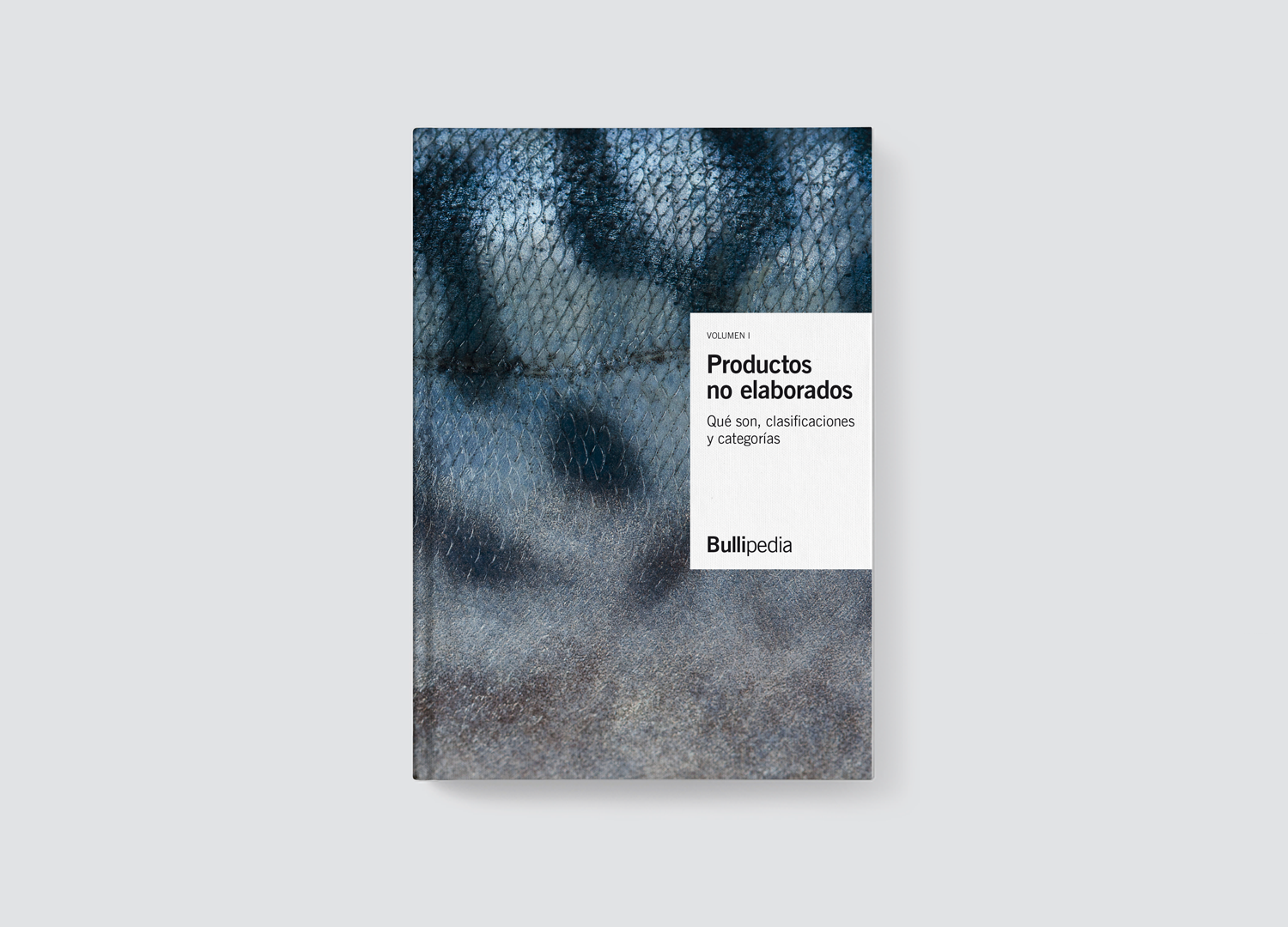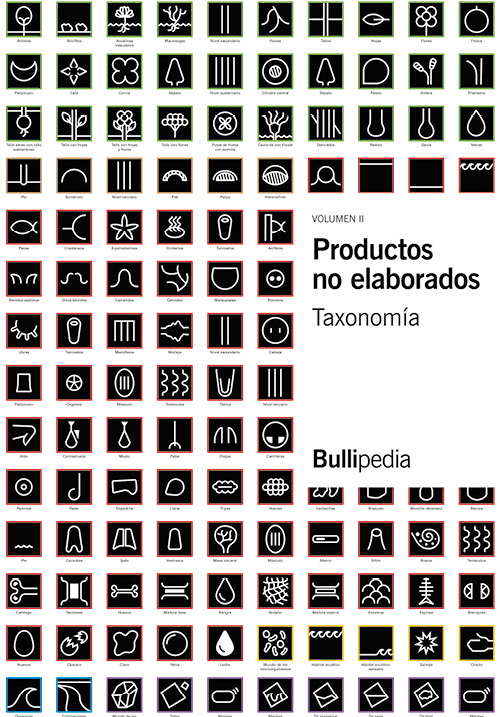Unelaborated products. Their description, classification and categorisation (Volume I)
Unelaborated products. Their description, classification and categorisation is one of the most ambitious projects undertaken by Bullipedia, directed by Ferran Adrià and the elBullifoundation. Its main objective is to gain an understanding of the many products available for our use, especially those not requiring the application of processing techniques, and discern their characteristics from numerous classification criteria. It presents a detailed analysis based on diverse disciplines that help us to understand and contextualise unelaborated products, and to express them in a simple, understandable and practical way.
520 pages
230 x 330 mm
Hard cover
ISBN: 978-84-09-13711-4

This is the first volume of an ambitious Bullipedia project focusing on unelaborated products, and which aims to push the boundaries of understanding in gastronomy and in the products utilised in its practice. To help contextualise and develop this work we have been guided by the Sapiens methodology, created by Ferran Adrià and the elBullifoundation team, and implemented in the work undertaken by Bullipedia.
This volume, which is based on lexical-conceptual, comparative and classificatory perspectives, does not intend to present all knowledge about products, given that the breadth of information would be too great; its purpose is to synthesise the key concepts in order to provide essential knowledge about products and transmit this in an understandable, orderly and engaging way.
What is a product? What is an unelaborated product? What are the differences between different types of products? How can they be classified? These are just some of the many questions posed by this work. And, although at first sight it may seem obvious, the perspectives they offer on the differing types of products, their characteristics and their categorisation are both challenging and surprising.
Typically, as a way to understand a topic, Sapiens uses the establishment of a previous order. Viewed from that perspective, the work develops more than ninety classification criteria for unelaborated products, following different approaches and perspectives within a gastronomic context. These classifications are helpful for professionals in the fine dining restaurant sector, as well as for anyone wanting to improve their skill set. They are valuable not only when purchasing products, but also during preparation and consumption, fostering the development of culinary creativity and innovation.
This is a thought provoking work and, as stated previously, only the first volume in this series. Three further volumes are on the way, through which we can explore new concepts and ways of interpreting and conceiving gastronomy.
In this section is a short summary of each chapter of the book
Download in PDF
INTRODUCTION
WHAT IS SAPIENS AND BULLIPEDIA
Continue reading >

CHAPTER 1
QUESTIONS CONCERNING THE UNELABORATED PRODUCT
Continue reading >

CHAPTER 2
UNDERSTANDING PRODUCTS ACCORDING TO THEIR CLASSIFICATION
Continue reading >

CHAPTER 3
PRODUCT CLASSIFICATIONS AND CATEGORIES
Continue reading >

CHAPTER 4
APPLYING CLASSIFICATIONS
Continue reading >

The Bullipedia is a titanic project brimming with detail and will be a valuable addition to the most comprehensive libraries. The texts of its books follow a pattern of questioning endeavour accompanied by the consequent exhaustive, meticulous and well-argued reply.
XL Semanal – Gourmet

In this volume of the collection the Sapiens methodology, established by Ferran Adrià, is employed to analyse the unelaborated products used in food preparation from a historical and holistic perspective, studying the whole as something greater than comprised by the sum of its parts. With the help of didactic illustrations, photos and conceptual maps it will surely become the guide of choice for every professional dedicated to the art of gastronomy.
Blog Hedonista

This project is ground-breaking and unique thanks to the pioneering way that knowledge related to food and gastronomy has been collected and classified in such an exhaustive and methodical way, incorporating a totally holistic approach. A gastronomic encyclopaedia specially designed for the sector.
Origen









































